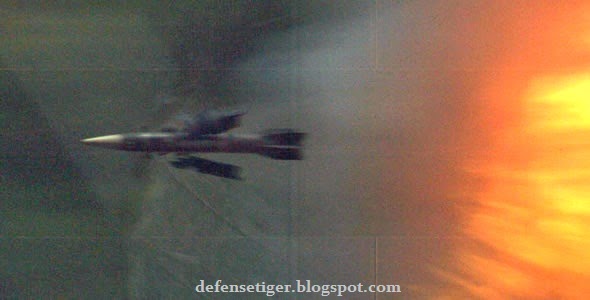The System is Capable of:
» monitoring and picturing sea communication lines;
» detecting and identifying hostile vessels through the use of active surveillance equipment;
» receiving target data via data-link;
» neutralising hostile vessels by using a new generation of anti-ship missiles.
The MCDS is available with different and flexible configurations depending on customer requirements. This system can operate in either a stand-alone mode or integrated within an existing surveillance radar network.
.jpg) |
At the DIMDEX exhibition in Doha, Qatar (25-27 March 2014), MBDA is presenting for the first time ever a new coastal defence system based on the Marte missile family.
|
In addition, MBDA can offer two different missile options for MCDS; the Marte MK2/N for the control of brown waters and Marte ER, for the control of a more expansive sea area.
The System Configuration Consists of:
» a Command and Control (C2) module, comprising an ISO standard 12 foot shelter that can be connected via data-link with the upper level surveillance system. This module includes consoles to manage the local picture provided by its own radar (stand-alone mode) or to track targets provided by the upper level surveillance system (integrated mode).
» a launcher module, comprising up to four firing units that can be mounted on ISO standard trucks. Each launcher can deploy up to four missiles.
» a logistics module, comprising a logistic and support vehicle, plus a variable number of reloading vehicles.
The all-weather Marte MK2 is a fire-and-forget, medium-range, sea-skimming anti-ship weapon system. The new version of the missile, called Marte ER (Extended Range), keeps the basic characteristics of the Marte family, but extends its range.
|
The Marte Missile Family
The all-weather Marte MK2 is a fire-and-forget, medium-range, sea-skimming anti-ship weapon system. It is equipped with mid-course inertial and radar-based terminal guidance and is capable of destroying small craft and seriously damaging larger vessels. The missile weighs 310 kg and is 3.85 metres long. Marte was first developed in the 1980s with the 30km range MK/2 version being deployed on helicopters. Subsequent models followed for integration on different platforms and thus a family of missiles came into being.
The Marte MK-2/S, where “S” stands for “Short” and indicates shorter munitions in order to enable simpler on board integration, has already been integrated on AW101 and NH-90 NFH helicopters (Naval/Nato Frigate Helicopter) in service with the Italian Navy. The Marte MK-2/A was then developed for launch from fixed-wing aircraft (fighter or patrol aircraft). Finally, in response to the growing interest for a lightweight, rapid-response surface-to-surface naval missile system for littoral operations, Marte MK2/N was developed.
The new version of the missile, called Marte ER (Extended Range), keeps the basic characteristics of the Marte family, but extends its range. The new product is different from previous versions thanks to two main features: turbojet propulsion (leading to a four-fold increase in range compared to the rocket motor version), and the new ISO-calibre cylinder cell. The missile, equipped with these new important components, still preserves a series of elements that were already present in previous versions of the Marte missile, providing a number of significant commonalities that are widely appreciated by the market.
Thanks to these improvements, the new missile has a range that now exceeds 100 km and a much increased speed, both in the cruise and final attack phases. However, it is shorter than the previous model. Logistic systems, such as the transport and stocking canister in the helicopter version and the trolley for moving and hooking the missile to aircraft, are the same as those used in the Mk2/S model, offering clear user advantages.









































.jpg)



